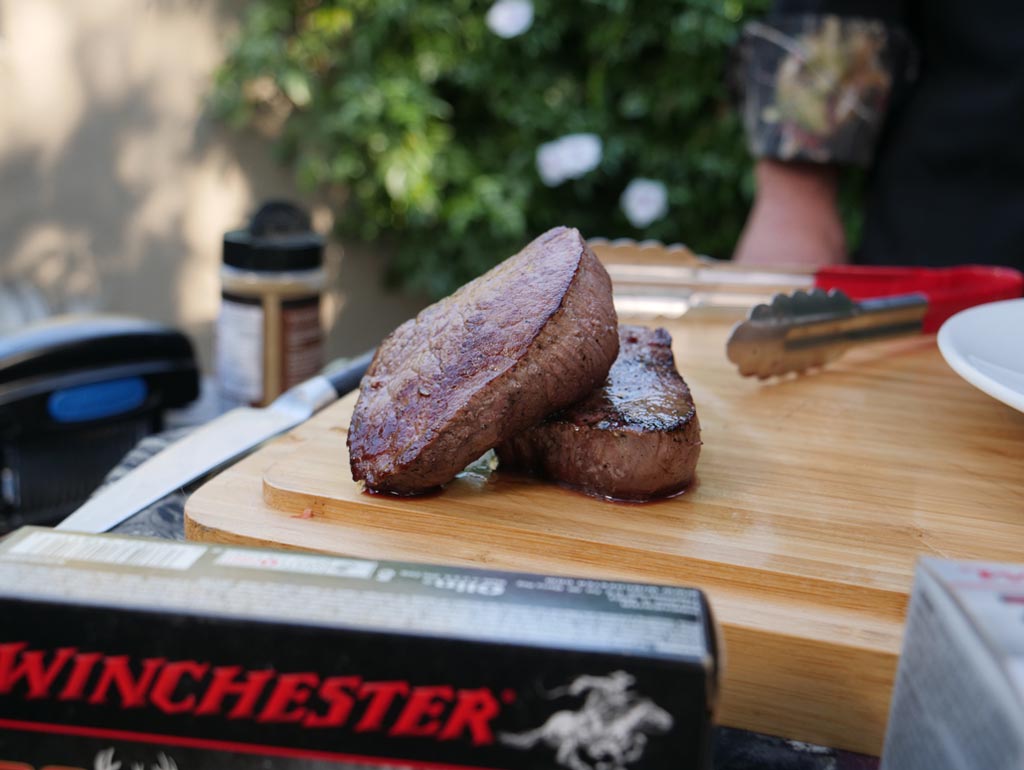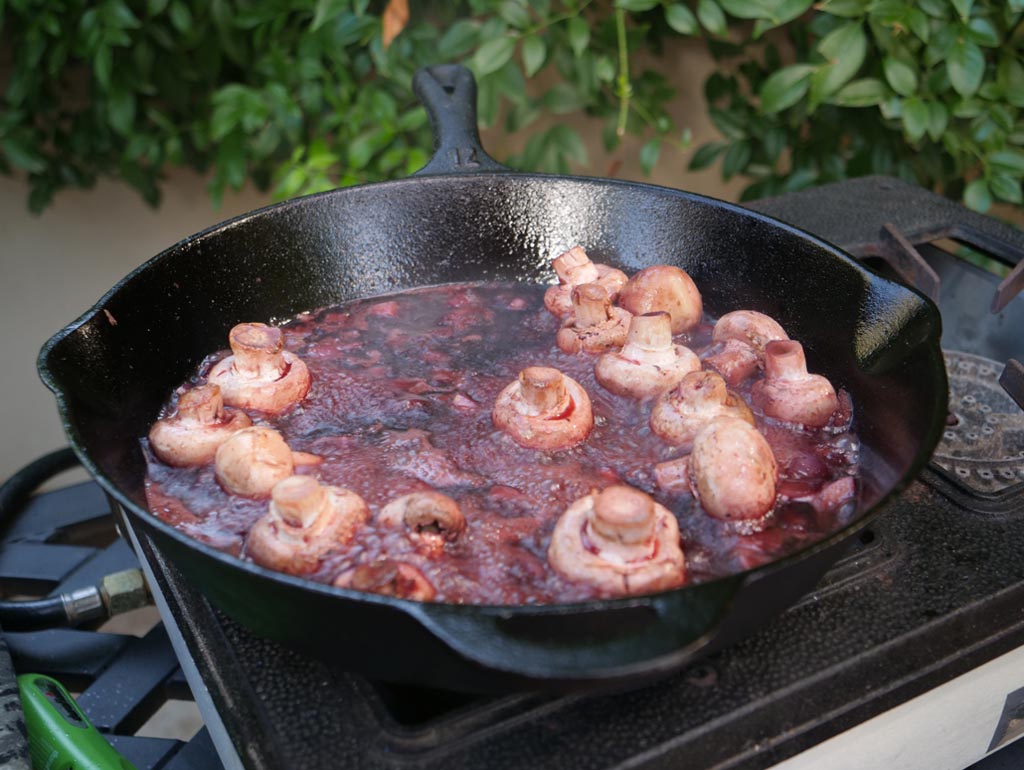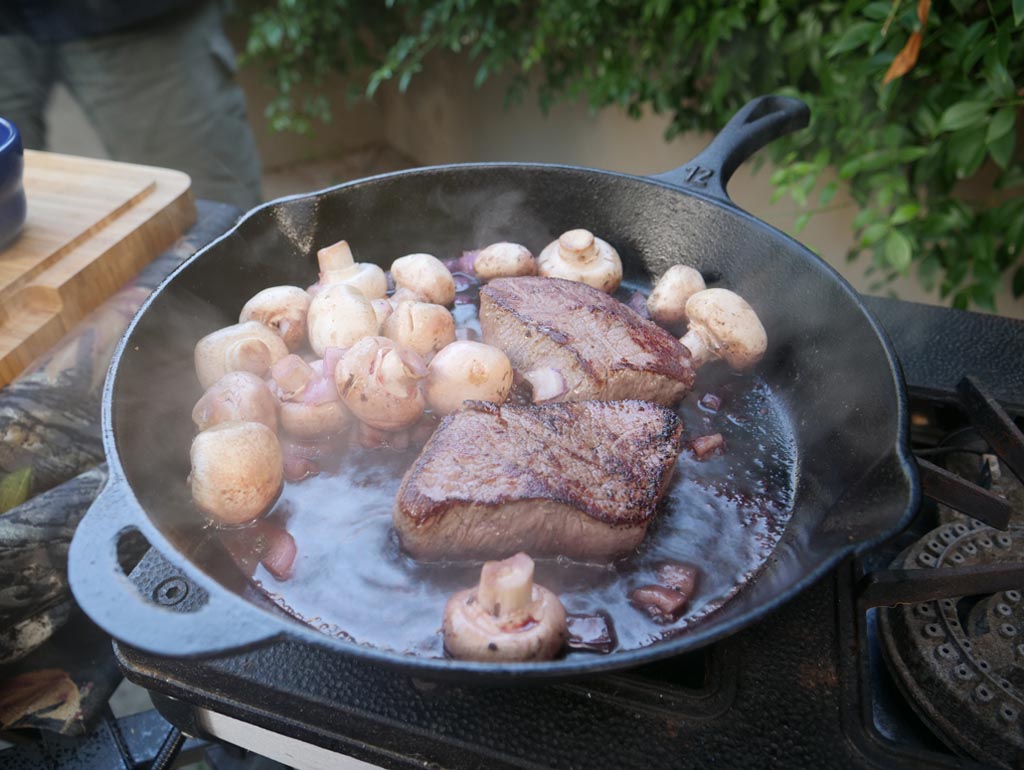Venison - It's What's for Dinner...and Here's How
It comes as no surprise that many people claim to not like the taste of wild game. I grew up with deer meat that had been cooked for what seemed like days and it was awful. Tough, livery, dry and gamey. I couldn’t understand how others could enjoy eating it.
We all know people who make a sour face when you ask them about eating wild game. They’ll say, “I’ve tasted deer meat. It’s nasty.” How is it possible that the same venison that we hold in such high regard can be considered unfit for human consumption by others?Preventing cookies from being stored on your device may interfere with your ability to view video content.
You can adjust your cookie setting by clicking the button below.
My first game bird was a jacksnipe that I shot in a swampy river bottom in hills of Virginia. Fortunately for me and not so good for them, jacksnipe are prone to giving the shooter several chances to dispatch them. After the first miss, this one circled back around to about the same place he started, allowing me time to reload my single-shot 20 gauge. Another miss or two and I managed to hit the target. I packed up my snipe and headed home to the amusement of my older non-hunting brothers who couldn’t wait to see how I was going to cook that scrawny bird. After gutting and plucking, I roasted it in the oven for about an hour, which was about 50 minutes too long. Dark, dense, dry and gamey, just the thing to turn anyone away from the next snipe hunt. But it wasn’t the snipe’s fault. I’ve cooked a pile of them since that foggy Virginia morning and they’re fantastic table fare.
Over the past couple of decades, I’ve pitched my style of wild game cookery to thousands of people from all walks of life. I’ve yet to go to an event where I don’t meet a few folks who are reluctant to sample a bite or two of whatever it is I’ve got in my skillet. It often takes a bit of coaxing, but I get a kick out of changing people’s minds about the taste of game.
“C’mon…just a bite. You say you’ve tried venison before and you didn’t like it. Someone did you wrong. I’d like you to take just ten seconds out of the rest of your life and try just a little nibble. Really, what’s the worst that could happen?”
“I could throw up.”
“That’s not going to happen. I promise. You’re going to be really surprised at how good this tastes. Here, just take this little piece.”
“You know, that’s not bad. It’s actually really good. What did you soak it in so that it doesn’t taste like deer?”
The recipe that people share with me most often involves cutting game meats into thin strips, marinating for a day or two in teriyaki and then wrapping with jalapeno pepper and bacon. There’s usually cream cheese or some other cheese in the mix, but the result is pretty much the same. Practically anything wrapped in crispy bacon and grilled over a smoky grill will taste good, but does it taste like deer? Not anymore.
Without a doubt, the most common mistake that home cooks make when cooking venison is to overcook whatever it is that’s on the grill, in the skillet, smoker or oven. However, there are some notable exceptions. Some parts are best cooked for several hours. Deer shanks, shoulders and necks are best cooked “low and slow” in at least an inch or so of liquid. Deer hunters who discard the shanks are depriving themselves of some of the most incredible meat on the animal. The better cuts, like loins and tenderloins, should be cooked quickly and with high heat.
If you are partial to well-done meat and just can’t get yourself to sample a slice of tender, moist and delicious lesser-cooked domestic meat or wild game, all is not lost. Anything cooked slowly, preferably in a covered pan with an inch or so of liquid, will eventually be pot roast tender. If, after several hours, your shoulder roast isn’t done, add a little more liquid, replace the cover and keep cooking. The “gamey zone” is when the internal temperature of a chunk of lean game meat is between 150 and 180 degrees. Like cheap stew beef, overcooked game can be tough and off tasting, but will eventually loosen up after simmering in a warm bath of barbecue sauce or Italian dressing. Many home cooks who are prone to overcooking decide that the best way to cook game is with a slow-cooker and a can of cream of mushroom soup. The meat will be tender, and it will taste like cream of mushroom soup which, to me, is not a victory.
The first thing I do with a hunk of venison is to see how it behaves in the pan when cooked medium-rare. Cut a slice from the roast, steak, backstrap, etc., season it with salt and pepper and slap it into a hot skillet with a little olive oil. Lightly brown on both sides but do it quickly. Now take a bite. If it’s tender and mild in flavor, it’s a good candidate for searing on a grill or, if it’s a roast, cooking slowly until the internal temperature id roughly 135 degrees. Once cooked, the roast can be sliced like a beef roast and paired with a sauce or sliced thinly and piled into a sourdough roll for a fantastic sandwich. If the meat is tough and chewy, your best bet is to cook it “low and slow.” Cut into chunks, brown and simmer in stock for a cold-weather stew. Or slowly roast until pot roast tender and serve with mashed potatoes and gravy.
If you suspect that the meat is bad. Perhaps it was mishandled in the field, got excessively freezer-burned or, for whatever reason, it just doesn’t taste right. I don’t try and mask unpleasant flavors with marinades or rubs. If it tastes bad, there’s a reason for it and I don’t eat it.
Tough cuts like shoulders, shanks and some of the hindquarter muscles need time, low moist heat and longer cooking times to turn them into something tasty and tender. The better cuts should be cooked quickly over higher heat. If you prepare each part of the animal like it is meant to be cooked, you should find that venison is as good, or better, than some of the best meals you’ve had anywhere.







